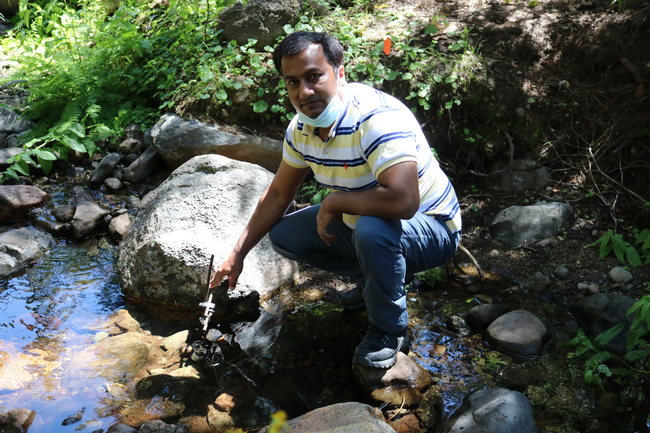
Precipitation and water levels in California
California has faced many droughts in the past, and we have always been able to manage them to some extent. However, with climate change creating a new hydrologic regime with more precipitation falling as rain than snow and higher evaporative demand, the state may be more at risk for drought now than in year's past according to Safeeq Khan, Cooperative Extension Specialist in Water and Watershed Sciences at the University of California Division of Agriculture and Natural Resource. Presently, the state is experiencing one of the driest years on record with only half of its average annual snow pack this past winter and appears to be heading towards another drought. Even more concerning is that this year's water and snow pack analytics are showing some resemblance to 2014 - the third year of California's most severe modern-day drought. With snow pack and precipitation beginning to decline, many Californians may be wondering whether there is anything California can do to prevent another stateside drought before it occurs.
In 2017, Khan wrote on the importance of groundwater storage infrastructure as a possible solution to make up for the loss of snow pack and build resilience to varying precipitation patterns experienced in California. Instead of continuing to rely on limited water stored in surface reservoirs, Khan suggested that the water from the wettest years, and wettest months, could be stored below our feet to help even out the cycles of drought and floods that California continues to have.
Based off of historical data combined with future climate projections, Khan has found the transitional precipitation zone (i.e., elevation range where phase of precipitation shifts frequently between rain and snow) in California to be shifting upward and estimated area with seasonal snow pack at the end of 21st century will likely decline by over 50%. The shift in precipitation phase will likely create average conditions being worse than the historical average conditions experienced in the 10 warmest winters. This loss of natural snow pack storage will worsen the cyclical droughts California continues to have. This year, the California Department of Water Resources showed the state's average precipitation from October 2020 to January 2021 with nearly 50% less rain and snow pack than average. Additionally, evaporation appears to be increasing in conjunction rising CO2 levels and warmer temperatures, which may further contribute to reduced water resources.
“How much rain we get in California really depends on where these atmospheric rivers hit the coast and how many we get in any given year. The majority of precipitation in California falls during these AR events so adding or missing one makes a big difference. Tapping on these extreme events and trying to figure out ways to store the water in the ground is one way we can prepare for droughts,” says Khan.
In order to prepare and preserve water available, Khan suggests California use a multi-pronged approach that, among other things, focuses on increasing storage, increasing efficiency, and maintaining watershed health. Although California has a tremendous amount of groundwater storage potential (between 850 and 1.3 trillion-acre feet) in comparison to surface water storage capacity (42 million acre feet), it has yet to fill its potential. Therefore, according to Khan, directing water into subsurface water storage and aquifers might be our best option to help us prepare for future cyclical droughts. Many agencies and groups have already started on this endeavor, which is a good sign.
With less water coming in, California may soon be feeling the trickle-down effect when it comes to water distribution. Most likely the California agriculture industry may soon, if not already, begin to experience water allocation problems which could have an impact on California economically and ecologically. Moreover, dried forest fuel and prolonged dry season could not only create an additional impact on California's water resources during wildfire season, it may also accompany further habitat deterioration and implications for wildlife within the state. Therefore, in order to prevent worsening deprivation, California may soon have to update it's water storage tactics in order to adapt to the state's changing climate.

